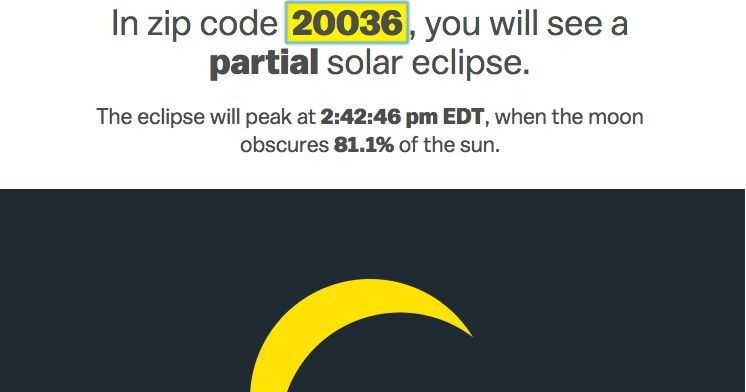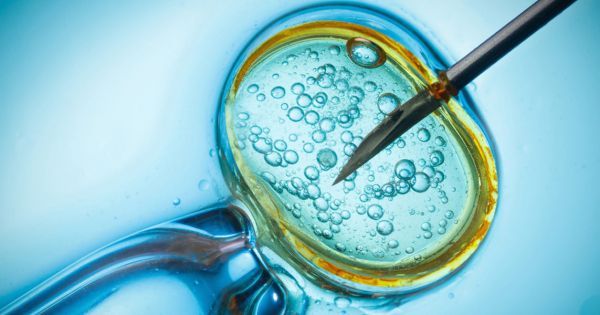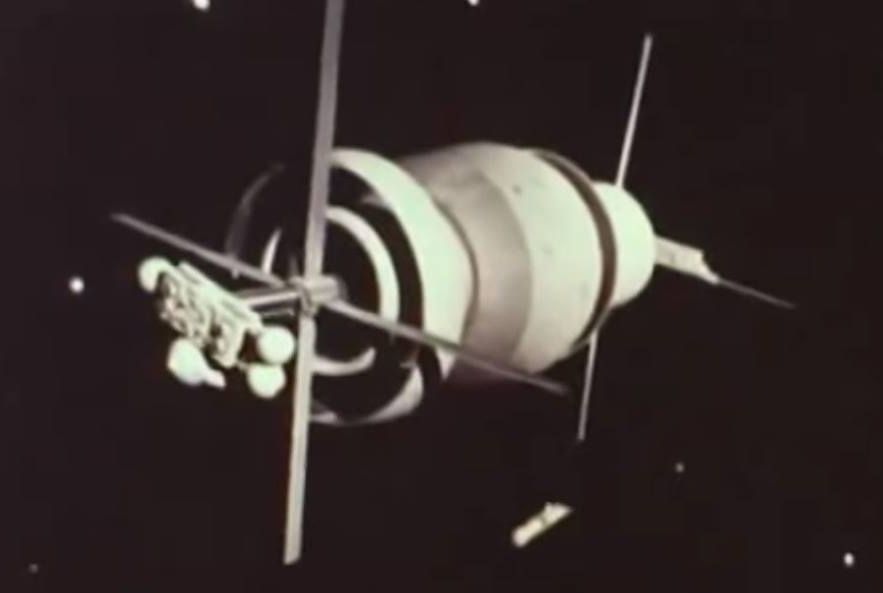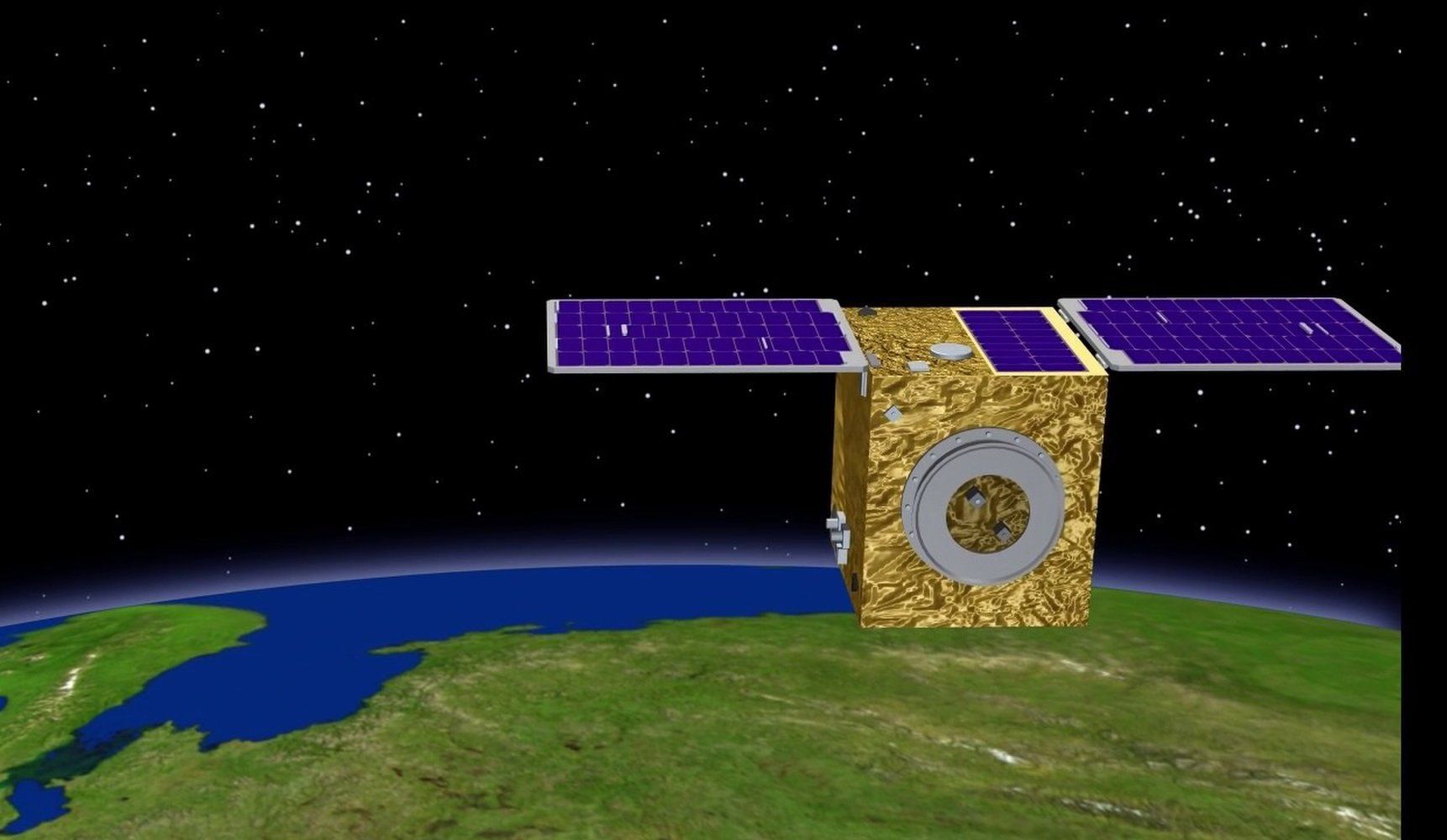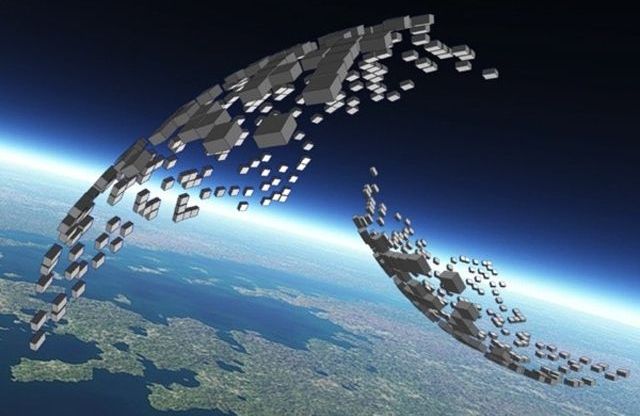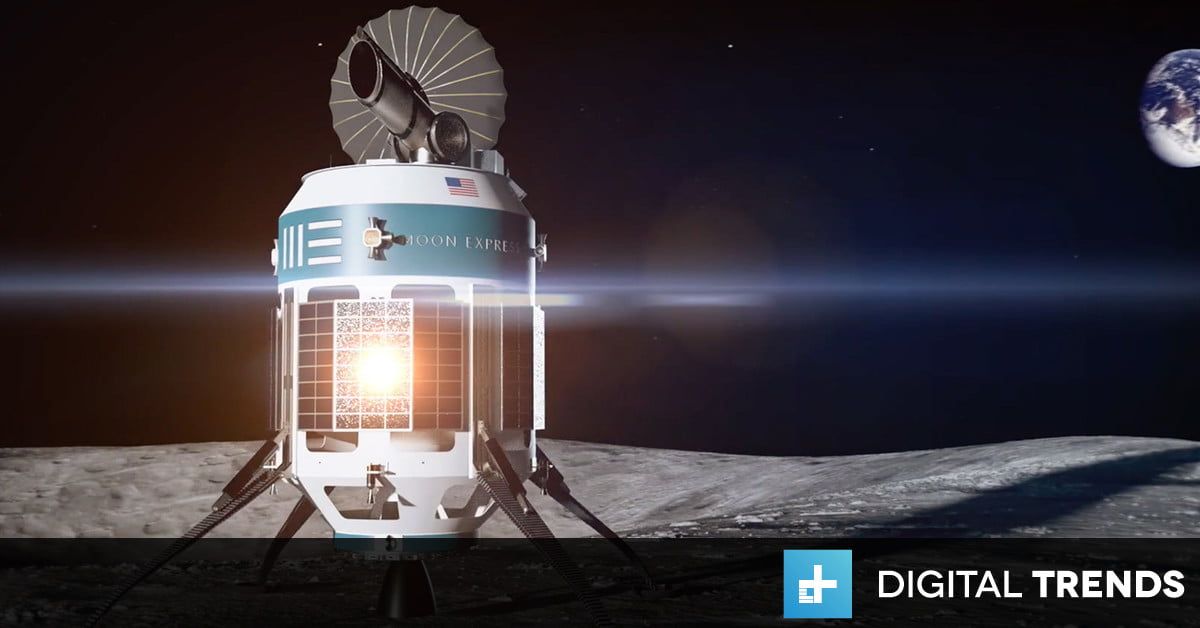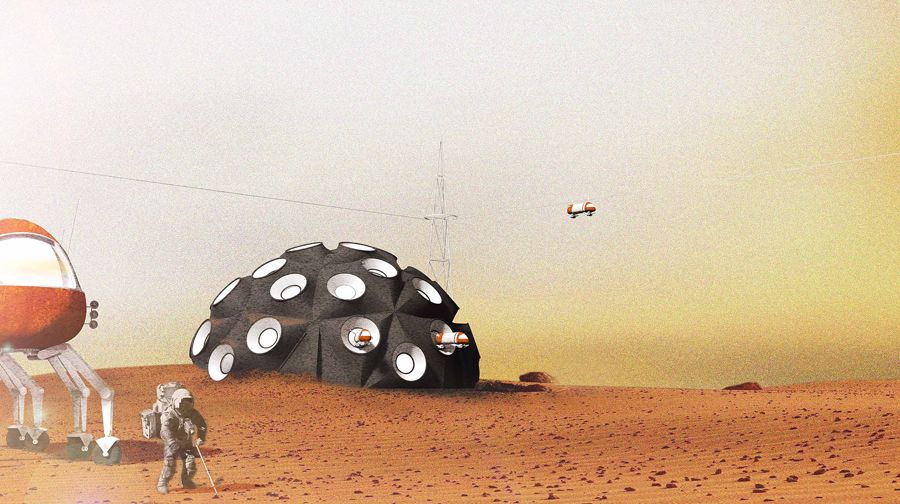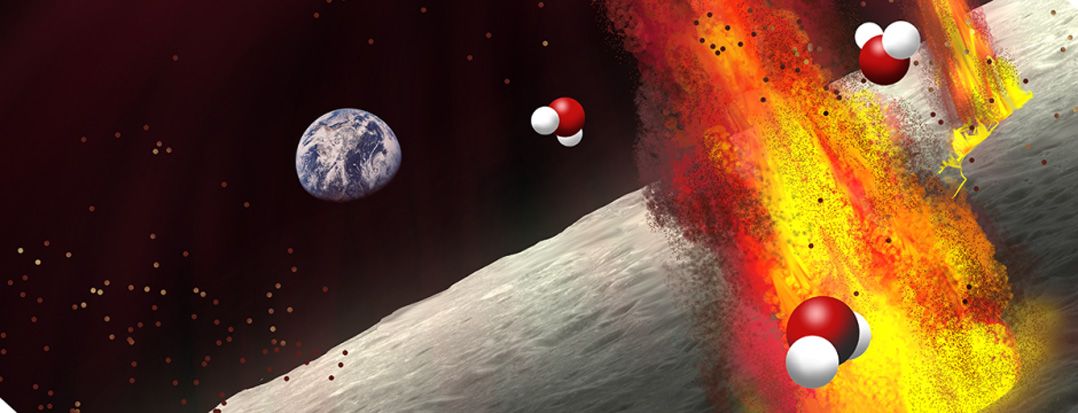On Monday August 21, a solar eclipse will cut across the entire United States. And wherever you are, you will be able to see it. Even though the “totality” — the area where the sun is completely blocked out by the moon — is only 70 miles wide, the whole country (even Alaska and Hawaii) will experience a partial eclipse.
This is what you’ll see, and the time you’ll see it, in your zip code.
We recommend punching in a few different ones to see how the eclipse experience will vary across the country. Salem, Oregon (97301), is going to see a total eclipse. Downtown Los Angeles (90012) will see 62 percent of the sun blocked at the peak. In Lake Charles, Louisiana (70601), it’ll be 71 percent.
